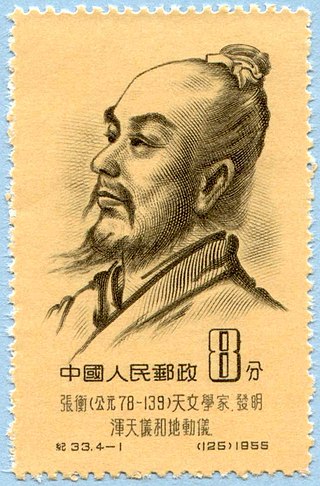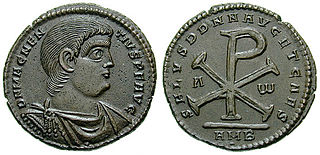Related Research Articles

The 120s was a decade that ran from January 1, AD 120, to December 31, AD 129.

Year 125 (CXXV) was a common year starting on Sunday of the Julian calendar. At the time, it was known as the Year of the Consulship of Paullinus and Titius. The denomination 125 for this year has been used since the early medieval period, when the Anno Domini calendar era became the prevalent method in Europe for naming years.

AD 80 (LXXX) was a leap year starting on Saturday of the Julian calendar. At the time, it was known as the Year of the Consulship of Augustus and Domitianus. The denomination AD 80 for this year has been used since the early medieval period, when the Anno Domini calendar era became the prevalent method in Europe for naming years.
The 150s decade ran from January 1, 150, to December 31, 159.
Year 121 (CXXI) was a common year starting on Tuesday of the Julian calendar. At the time, it was known as the Year of the Consulship of Verus and Augur. The denomination 121 for this year has been used since the early medieval period, when the Anno Domini calendar era became the prevalent method in Europe for naming years.
Year 132 (CXXXII) was a leap year starting on Monday of the Julian calendar. At the time, it was known as the Year of the Consulship of Serius and Sergianus. The denomination 132 for this year has been used since the early medieval period, when the Anno Domini calendar era became the prevalent method in Europe for naming years.

Year 399 (CCCXCIX) was a common year starting on Saturday of the Julian calendar. At the time, it was known in Rome as the Year of the Consulship of Eutropius and Theodorus. The denomination 399 for this year has been used since the early medieval period, when the Anno Domini calendar era became the prevalent method in Europe for naming years.
Year 166 (CLXVI) was a common year starting on Tuesday of the Julian calendar. At the time, it was known as the Year of the Consulship of Pudens and Pollio. The denomination 166 for this year has been used since the early medieval period, when the Anno Domini calendar era became the prevalent method in Europe for naming years.
Year 168 (CLXVIII) was a leap year starting on Thursday of the Julian calendar. At the time, it was known as the Year of the Consulship of Apronianus and Paullus. The denomination 168 for this year has been used since the early medieval period, when the Anno Domini calendar era became the prevalent method in Europe for naming years.

Year 304 (CCCIV) was a leap year starting on Saturday of the Julian calendar. It was known in the Roman Empire as the Year of the Consulship of Diocletian and Maximian. The denomination 304 for this year has been used since the early medieval period, when the Anno Domini calendar era became the prevalent method in Europe for naming years.
Year 259 (CCLIX) was a common year starting on Saturday of the Julian calendar. At the time, it was known as the Year of the Consulship of Aemilianus and Bassus. The denomination 259 for this year has been used since the early medieval period, when the Anno Domini calendar era became the prevalent method in Europe for naming years.

Year 350 (CCCL) was a common year starting on Monday of the Julian calendar. At the time, it was known as the Year of the Consulship of Sergius and Nigrinianus. The denomination 350 for this year has been used since the early medieval period, when the Anno Domini calendar era became the prevalent method in Europe for naming years.

Year 320 (CCCXX) was a leap year starting on Friday of the Julian calendar.
Year 7 BC was a common year starting on Saturday or Sunday of the Julian calendar and a common year starting on Thursday of the Proleptic Julian calendar. In the Roman world, it was known as the Year of the Consulship of Tiberius and Piso. The denomination 7 BC for this year has been used since the early medieval period, when the Anno Domini calendar era became the prevalent method in Europe for naming years.
Year 123 BC was a year of the pre-Julian Roman calendar. At the time it was known as the Year of the Consulship of Balearicus and Flamininus and the Sixth Year of Yuanshuo. The denomination 123 BC for this year has been used since the early medieval period, when the Anno Domini calendar era became the prevalent method in Europe for naming years.
Year 184 BC was a year of the pre-Julian Roman calendar. At the time it was known as the Year of the Consulship of Pulcher and Licinus. The denomination 184 BC for this year has been used since the early medieval period, when the Anno Domini calendar era became the prevalent method in Europe for naming years.
Year 157 BC was a year of the pre-Julian Roman calendar. At the time it was known as the Year of the Consulship of Caesar and Orestes and the Seventh Year of Houyuan. The denomination 157 BC for this year has been used since the early medieval period, when the Anno Domini calendar era became the prevalent method in Europe for naming years.

Pudens was an early Christian saint and martyr. He is mentioned as a layman of the Roman Church in 2 Timothy 4:21.

Saint Novatus is an early Christian saint. His feast day is 20 June.
Koiak 11 – Coptic calendar – Koiak 13
References
- ↑ "Novatus". santosepulcro.co.il. Retrieved November 30, 2024.
- ↑ "N (Old Rome & Italy, Saints)". www.orthodoxwestinitiative.com. Retrieved November 30, 2024.
- ↑ "Calendar of Saints - 20 June". catholicsaints.mobi. Retrieved November 30, 2024.
- ↑ "Latin Saints of the Orthodox Patriarchate of Rome". www.orthodoxengland.org.uk. Retrieved November 30, 2024.